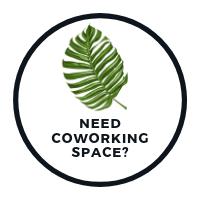|
Work environment is used to describe the surrounding conditions in which an employee operates. The work environment can be composed of physical conditions such as office temperature, or equipment, such as personal computers. It can also be related to factors such as work processes or procedures.
People are happiest and most productive when they work in an environment that suits them. Companies have different cultures, so it is essential for them to hire people who fit. The work environment can involve the social interactions at the workplace, including interactions with peers, subordinates, and managers. They should be comfortable at work to be super productive. Everyone has a preferred way of working. Some people like the formality of processes. They like it when processes are in place, so they know what steps to take. Others may prefer a more informal work environment in which there is less structure in in the way the company operates. They like extemporaneous meetings in lobbies and hallways, and business decisions are made over a casual lunch. 1. The individual-focused environment In an individual-focused environment, the office offers individuals the flexibility to customize their working styles. Some individuals may be allowed to work from home if that doesn't interfere with their productivity. Others may have flexible hours, and still, others may customize their desks and furniture however they like. Everyone works differently, and this environment recognizes and celebrates that fact. 2. The 'open skeptic' environment In a skeptical environment, everything is questioned because questions are encouraged. When someone suggests a new marketing strategy, someone else asks why it would work better than the alternative. Questions feed discussion, and because everyone is asking questions, everyone is moving the company forward. Nobody is judged or reprimanded for his or her ideas. and all ideas are considered equally. 3. The no-walls environment The no-walls environment is all about keeping the team together. There are no offices or enclosed cubicles (or if there are, the doors are open), so employees can speak freely with one another. These environments usually have a common break room, and team-building events to inspire cooperation and mutual appreciation. 4. The mutual-feedback environment This environment favors honest feedback above all other forms of communication. When a worker needs to improve, he or she is told about it. When a boss' approach is unproductive or inefficient, that communication is made, too. People trust one another to give, listen to, and act on mutual feedback, and everyone can improve as a result. 5. The unified environment The unified environment allows people to operate as individuals but still, focus on succeeding as a team. This type of environment usually setws "team" goals and will enable people to work together in smaller groups to accomplish team tasks. Employees are focused on working together, and individually hold themselves accountable for the quality of their work. A startup environment is very important. As startup is driven by early people, it is important to set up an environment where everyone can be productive and have an efficient way to give feedbacks to make sure everything is working correctly. No matter what set up you need for your startup, Treehouse Society has you covered. Schedule a tour today! Related: How to Test Your Startup Idea in a Coworking Space
0 Comments
Leave a Reply. |
Categories
All
|




